Denver Travel Guide
Denver lies one mile (1.6km) above sea level and is the gateway to the majestic peaks of the Rocky Mountains. Home to brilliant blue skies and breathtaking mountain scenery, it was founded as a gold-mining camp in 1858, and was in the centre of the Old West. Naturally, it was filled with cowboys, gamblers, saloons, gunslingers, Native Americans and crooked characters such as the infamous con artist, Jefferson 'Soapy' Smith. Although very little gold was actually discovered in the area, Denver still grew from the gold rush.
Today, the 'Mile High City' has shed its cow-town image and most vestiges of its cowboy past, and has developed into a modern city with wonderful museums, historic architecture, cultural attractions, shopping venues and a world-class airport. It has more than 200 parks, tree-lined boulevards and a completely refurbished lower downtown area (LoDo to the locals), where blocks of old Victorian buildings and warehouses have been carefully restored to house restaurants, galleries, antique shops and jazz clubs. Historic Larimer Square is the heart of the dining and nightlife scene. Besides Chicago and San Diego, Denver brews more beer than any other city in America and most of it can be sampled in LoDo, where the city's brewpubs proliferate.
Beer lovers should also make a point of visiting Denver during October for the Great American Beer Festival, which sees beer brewers and tasters gather together for America's largest collection of beer served under one roof. More than 330 breweries are represented and there are close to 1,500 brands of beer on offer on the festival floor.
Most locals are active nature lovers who take advantage of the city's beautiful setting, the pleasant climate and unlimited outdoor adventures just minutes from the centre, including skiing, hiking, mountain biking and fishing. Tourism focuses on its natural setting and the outdoors, and as such it's a major destination for travellers heading into the mountains. Visitors to Denver will be pleasantly surprised by its welcoming and friendly nature and by how good-looking the city is.
Things to do in Denver
Denver is Middle America's hub where the Great Plains give way to an urban sprawl at the edge of the Rocky Mountains. This popular holiday destination offers all the modern tourist amenities and attractions travellers could wish for, with many wonderful opportunities for outdoor recreation lying just beyond the city limits. Denver is well-geared towards families as there are several educational attractions in the downtown area, and culture lovers will thrive on a full programme of musical and arts events. However, the city has something for almost everyone.
Within the 'Mile High City', major sightseeing attractions include the Denver Art Museum, the Denver Museum of Nature and Science, the State Capitol Building, the Denver Botanic Gardens, the Elitch Gardens Theme Park, Washington Park, the History Colorado Center, and the Denver Mint. Sports fanatics will enjoy taking in a game at the Coors Field Baseball Stadium, and shopaholics will relish a stroll through Denver's 16th Street Mall, an outdoor shopping and dining centre packed full of restaurants and boutiques.
And yet, the city's many attractions pale in comparison to the beauty on its doorstep. Most travellers that end up in Denver are embarking on holidays set to be full of outdoor adventures in the Rocky Mountains.
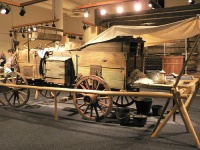
History Colorado Center
Documenting the colourful history of Colorado and the stories of those who have lived here over the centuries, the History Colorado Center brings to life the world of cowboys and gunfighters, Native Americans, miners and gold panners, explorers, buffalo hunters, wagon trains and railroads. The museum is hugely innovative, blending technology with fascinating artefacts. Visitors can explore an enormous map of the state with a storytelling time machine, grab a headlamp and enter a hard-rock mine, traverse the plains in a Ford Model T (which was one of the first mass production vehicles), then soar off the world's first ski jump. Exhibits include portrayals of life in 19th-century Denver, Buffalo Soldiers and the Mesa Verde cliff.
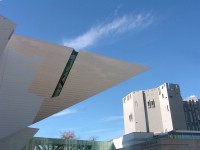
Denver Art Museum
Housing one of the largest Native American art collections in the country, the Denver Art Museum is a huge, seven-storey structure that also features the works of American Western artists, and art from Africa, Europe, Asia and the Pacific. The growing Native American collection displays work from about 150 tribes throughout the country, arranged geographically and spanning almost 2,000 years. Discovery Libraries contain shelves of art objects and prints, a costume closet that allows visitors to try on olden-day clothing, as well as reading corners. The museum is interesting for people of all ages.
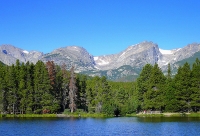
Rocky Mountain National Park
The most popular attraction in Colorado is the spectacular Rocky Mountain National Park, with its snow-covered peaks, flower-flecked meadows, alpine lakes, thundering waterfalls and wildlife. These images of beauty have graced countless calendars and coffee-table books and are instantly recognisable as belonging to Colorado. Because of the high elevation of the park, a third of which is at an altitude of more than 11,500 feet (3,505m), there are large areas above the tree line of alpine tundra, meaning visitors will encounter constant snow and flora seldom found outside the Arctic. Although usually considered the realm of hikers, climbers, fishermen and horse riders, it's possible to enjoy the park without breaking a sweat thanks to one of America's most scenic drives, the Trail Ridge Road. Crossing the Continental Divide at over two miles (3km) above sea level, the 48-mile (77km) highway linking Estes Park to Grand Lake is one of the highest continuous highways in the country, which affords dizzying views in all directions. The sweeping vistas of snowy peaks and glaciers, forests, streams and meadows where elk, mule deer and bighorn sheep can be seen, are exceptional. The road also provides access to several walking trails. In winter the road is closed, but activities such as cross-country skiing, ice fishing and snow-shoeing are popular. Most visitors come during the summer months, but the park can get quite crowded and the roads congested; the best time to enjoy the park is early autumn, after the crowds and before the winter snows. The resort village of Estes Park is the eastern gateway to the park and very popular with visitors, while the western resort of Grand Lake is quieter with an idyllic setting on the shores of a large lake.
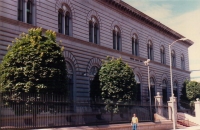
Denver Mint
More US money is made in Denver than anywhere else in the country, and visitors can take a tour of the Denver Mint to see exactly what's behind that tiny 'D' on most US coins. The Denver Mint opened in 1863, and originally melted gold dust and nuggets into bars for the Federal Reserve. Today it churns out billions of coins each year. Self-guided tours through the visitors' gallery provide a birds-eye view of the coin-minting process, with signs and displays explaining how it works. The whole tour takes about an hour, and reservations are required. There's a gift shop selling historic coins and replicas, which make great souvenirs for travellers. It's also possible to purchase coins online via the official website.
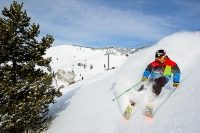
Ski resorts
Boasting some of the world's top ski resorts, such as Vail and Aspen (to name two of the best), the main attraction of the Rocky Mountains has to be its plethora of ski resorts. Travellers looking for the ultimate winter ski holiday are spoilt for choice when they visit Colorado's Rockies, as there are at least 20 resorts to choose from. From amateurs and intermediates to those looking to carve their way down pristine black runs, there's a skiing or snowboarding opportunity for everyone. Some of the resorts are glamorous and upmarket, while others are more family-friendly.
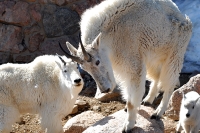
Mount Evans
Mount Evans has an altitude of over 14,000 feet and offers visitors truly spectacular views from its summit, as well as the opportunity to see various forms of Rocky Mountain wildlife such as American Elk, mountain goats, marmots and big horn sheep in their natural habitats. Just 65 miles (about 100km) from Denver (including an exhilarating 15 miles on 'America's highest paved road', the Mount Evans Scenic Byway), Mount Evans is perhaps the easiest way for visitors to Colorado to get an authentic 'Rocky Mountain experience'. Mount Evans also offers fishing opportunities, and hiking and bicycle trails; although it's most commonly visited as a day-trip from Denver, and is easily accessible by car for the less fit. Visitors should remember to pack a lunch for the summit, as the views will keep them up there for hours.
Denver Museum of Nature and Science
The Denver Museum of Nature and Science is one of those rare attractions that is as entertaining as it is educational, and as suitable for kids as it is fascinating for grown-ups. The museum draws thousands of teachers and students each year, and countless more tourists, all of who value the unique, hands-on presentation style of the exhibitions. Boasting the Gates Planetarium, a giant screen experience called the Infinity Theater, and an assortment of high-tech, interactive 'discovery areas' (most famously, the 'Space Odyssey' and 'Prehistoric Journey' sections), visitors of all ages are sure to come away from the Denver Museum of Nature and Science enriched, and more enthusiastic about the world's natural treasures. The museum also houses a popular gift shop and cafe.
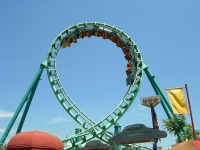
Elitch Gardens Theme Park
This popular amusement park is conveniently located in downtown Denver, offering about 50 rides and attractions for families in Denver. Rides range from the thrilling ten-storey Twister II roller coaster, to the pretty hand-carved carousel that dates back to 1925. The connected Island Kingdom Water Park offers relief on hot summer days, with around a dozen waterslides, raft rides, and family play areas. Entrance to the theme park includes entrance to the water park at no extra cost. Elitch Gardens Theme Park is seasonal, open between April and October and closed the rest of the year. Visitors should note that the park is open daily in the peak summer months but only sporadically in April, May, September and October; it is essential to check the calendar on the official website listed below before visiting to avoid disappointment. The E and C light rail lines stop near the entrance to the theme park.
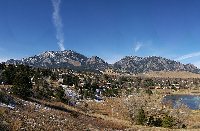
Boulder
A laid-back university town, located roughly 25 minutes northwest of Denver, Boulder is a sophisticated and artistic city. The large population of students from Colorado University gives Boulder a lively nightlife, a sense of fun, and a liberal attitude. Taking full advantage of its close proximity to the Rocky Mountains, Boulder is fanatical about outdoor activities such as hiking, rock climbing, mountain biking, camping and skiing, and has positioned itself as a tourist hub for travellers on their way to the nearby Rocky Mountain National Park. Boulder is stunningly situated and has enough impressive views to satisfy anybody in search of Colorado's beauty.
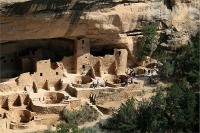
Mesa Verde National Park
Mesa Verde National Park provides a glimpse into the Ancestral Pueblo culture (also called the Anasazi), a tribe which inhabited the area for over 700 years from the year 600 to 1300. The park contains thousands of archaeological sites, including hundreds of cliff dwellings. Travellers can start at the Far View Visitors' Center, located 15 miles (24km) from the entrance, and join a ranger-guided tour of popular sites such as Cliff Palace, Balcony house, Spruce Tree House, and Long House. Many sites are only accessible on the tours, and may be difficult for those who aren't physically fit. The ruins are incredibly impressive and very well preserved, and are some of the greatest archaeological treasures in the Americas.
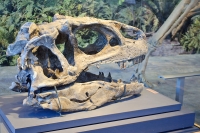
Dinosaur National Monument
Dinosaur National Monument is one of the best places to see prehistoric dinosaur fossils in the US, and features the Carnegie Dinosaur Quarry, which is a famous archaeological site that still displays thousands of fossils for the public to see, along with exhibits on life during the late Jurassic period. The park was also home to outlaws and homesteaders in the 1800s, and there are a few historic sites relating to their presence, including the Rial Chew Ranch Complex and Denis Julien Inscription. The area is scenically splendid and offers many fun outdoor activities, such as great hiking trails and river rafting down the rapids of the canyons for the extra adventurous.
Getting Around
The public transport system in Denver is excellent, with an outstanding, comprehensive bus network that is supplemented by a light-rail line operating throughout the metropolitan area and outlying towns. Along the 16th Street Mall, the Regional Transportation District provides a free service called MallRide. Taxis can be hailed on the streets, but it is better to find them at taxi ranks or to order them by phone. Cars are not necessary for downtown and parking is expensive. Lyft and Uber are also options.
Denver Climate and Weather
Denver experiences a semi-arid climate with dry, cold winters, warm summers, rainy springs, and pleasant, mild autumns. Winter temperatures average between 17ºF (-8ºC) and 46ºF (8ºC). The weather in Denver is influenced by the nearby Rocky Mountains, which block the winter storms somewhat. In summer, the humidity from the Gulf of Mexico causes afternoon thunderstorms. Summer temperatures average between 50ºF (10ºC) and 89°F (32ºC). Denver's weather can also be unpredictable, with unseasonable snowstorms occurring. The average annual rainfall is low, and sunny skies are the norm.
The weather in Denver is notoriously unpredictable, but the best time to visit, especially for lovers of the outdoors, is during late spring or early autumn, when there are plenty of sunny days and a number of outdoor events. Winter sports enthusiasts travel to Denver for the ski resorts during winter.
United States of America travel info
Electricity
The electrical current is 120 volts, 60Hz. Plugs are mainly the type with two flat pins, though three-pin plugs (two flat parallel pins and a rounded pin) are also widely used. European appliances without dual-voltage capabilities will require an adapter.
Language
English is the most common language spoken but Spanish is often heard in the south-western states.
Money
The official currency is the US Dollar (USD), which is divided into 100 cents. Only major banks exchange foreign currency. ATMs are widespread and credit cards are widely accepted; Apple Pay and Google Pay are very popular. Banking hours are Monday to Friday 9am to 3pm.
Tipping
A 15 percent tip is expected by taxi drivers, bartenders, hairdressers and waiters, but travellers shouldn't tip in fast-food or self-service restaurants. In expensive restaurants or for large parties, the tip should be 20 percent of the bill. It's normal to tip staff such as valets and porters in hotels; this is discretionary, although a minimum of $5 is expected. Most services are customarily tipped if the service is good.
Health
There are no specific health risks associated with travel within the USA. Medical facilities are excellent, but expensive. Only emergencies are treated without prior payment and treatment can be refused without evidence of insurance or proof of funds. Good medical insurance is essential.
Safety
Travel within the United States is generally trouble-free, though travellers should be aware that the US shares with the rest of the world an increased threat from terrorist incidents. Security has been heightened, particularly at airports. Restrictions on hand luggage apply and travellers are advised to check on the latest situation with airlines in advance. Travellers should also be alert to the dangers of car and street crime in cities and should use common sense and take basic precautions. Hurricanes are common between June and November, putting the southern USA, including the Gulf Coast and the eastern US at risk. There's a risk of wildfires in many dry areas in the US, particularly on the West Coast from March to November.
Local customs
Laws vary from state to state, including speed limit, fines and punishment. The age at which alcohol may be legally bought and consumed is 21 years.
Doing business
In such a large country, filled with so many diverse groups, business practices may differ according to each state, though rarely to any large degree. The East Coast is traditionally more formal than the West Coast, though in states such as California, dress code and conservative appearance are as common as they would be in New York. Punctuality is important throughout the country and it's considered rude to be late for a meeting. Gift-giving is uncommon as it may be construed as bribery. Appropriate titles (Mr, Mrs, Ms) are used upon introduction and until otherwise stated. Americans favour politeness and greetings of 'Hello' and 'How are you?' are often expressed with sincerity. Business hours may vary in each state, but an 8am start and 5pm finish Monday to Friday is the most common with an hour over lunch.
Status and age are not necessarily indicative of seniority, nor do they carry much weight in themselves. Those doing business in the States should be mindful of this fact; foreigners should never make assumptions about someone's position or rank. Best practice is to be respectful to all parties. That said, the US upholds a hierarchal business structure in which 'the boss' is the ultimate decision-maker. Senior leaders have the power of the last word, and can go against the grain just as easily as they can follow popular opinion. Foreigners should concentrate on winning over this individual, even if the greater group seems unsupportive. Americans value a direct style of communication. In this fast-paced, consumer culture 'time is money', and small-talk is viewed as unnecessary and wasteful. It's best for foreigners to get to the point quickly, speak about issues in a frank and open manner, and to avoid taking offence if someone questions or challenges them outright.
Duty free
Travellers to the United States who are returning residents of the country do not have to pay duty on articles purchased abroad to the value of $800 provided their stay was longer than 48 hours and their duty-free allowance was not used in the 30-day period prior. For passengers arriving from Samoa, Guam and the U.S. Virgin Islands, a duty-free allowance of $1,600 is allowed. The following items are included in this: 50 cigarettes and 10 cigars and 150 millilitres (5 fl. oz.) of alcoholic beverages or 150 millilitres (5 fl. oz.) of perfume containing alcohol. Restrictions may apply to goods from Cuba, Iran, North Korea, Burma (Myanmar), Angola, Liberia and Sudan. It is prohibited to import Cuban cigars from any country.
Travellers to the United States who are non-residents do not have to pay duty on the following items: 50 cigars or 200 cigarettes and gifts to the value of $100 provided their stay in the USA is not less than 72 hours and that the allowance has not been used in the preceding six-month period.
Prohibited items for residents and non-residents include meat or meat products, poultry, narcotics, absinthe, plants, seeds, vegetables, fruits, soil, live insects and other living plants or animal pests. Fish is prohibited unless it carries disease-free certification. Wildlife and animals or their by-products carry restrictions. Dairy products and eggs from specified countries are not allowed. Firearms and ammunition are not allowed without the necessary license and permit.
Communications
The international country dialling code for the United States is +1. Mobile networks cover most of the country, especially all urban areas; travellers can purchase local prepaid SIM cards for unlocked phones or use eSIMs if their cellular providers support it on their networks. WiFi is widely available.
Passport & Visa
It is highly recommended that travellers' passports have at least six months' validity remaining after the intended date of departure from them travel destination. A visa is required for short visits unless travellers qualify for entry under the Visa Waiver Program.
The Visa Waiver Program (VWP) enables citizens of certain countries to travel to the US for a stay of up to 90 days without a visa. Visitors under the VWP need a valid Electronic System for Travel Authorization (ESTA), which allows the US government to screen all visitors before travel. Visitors entering the country under the VWP must have a machine-readable passport (MRP) that has a barcode on the photo page. Travellers under the VWP must have passports that include biometrics if they wish to enter the country without a visa, which means that passports must contain unique personal data such as fingerprints or iris details. All passports must contain a digital photo image in order to travel visa-free. All visitors to the USA have a photograph and two fingerprints taken by an inkless scanner on arrival, including those travelling visa-free under the VWP.
As part of the Western Hemisphere Travel Initiative (WHTI), all travellers travelling between the United States and Canada, Mexico, Bermuda, and the Caribbean region are required to present a passport or other valid travel document to enter or re-enter the United States. If departing from the USA, a valid passport is required by immigration authorities. Immigration officials often apply different rules to those stated by travel agents and official sources.
Entry requirements
US citizens require passports.
UK nationals require a passport valid for duration of stay. Most passport holders can get an Electronic System for Travel Authorisation (ESTA) through the Visa Waiver Programme, which allows travel to the US for up to 90 days. The VWP includes tourism, certain types of business visit and transit to another country.
The most important requirement on entering the U.S. is providing proof of Canadian citizenship. A valid Canadian passport is the best document to prove Canadian citizenship and the right to return to Canada. However, several other documents can serve, depending on the mode of transport. Generally, Canadian citizens do not require visitor, business, transit or other visas to enter the United States from Canada, though there are some exceptions.
Passports must be valid for the period of intended stay. If visiting the US for fewer than 90 days, Australian nationals may be eligible to apply for an Electronic System for Travel Authorization (ESTA), and enter under the Visa Waiver Program (VWP).
South Africans must hold a passport valid for duration of stay. A visa is required.
Passports must be valid for duration of stay. Irish nationals can get an Electronic System for Travel Authorisation (ESTA) under the Visa Waiver Programme for entry into the United States.
Passports must be valid for duration of stay. New Zealand nationals can get an Electronic System for Travel Authorisation (ESTA) under the Visa Waiver Programme for entry into the United States.
Useful contacts
United States Tourist Office: www.usatourist.com
911 (General)Embassies / consulates in other countries
United States Embassy, London, United Kingdom: +44 20 7499 9000.
United States Embassy, Ottawa, Canada: +1 613 688 5335.
United States Embassy, Canberra, Australia: +61 2 6214 5600.
United States Embassy, Pretoria, South Africa: +27 12 431 4000.
United States Embassy, Dublin, Ireland: +353 1 668 8777.
United States Embassy, Wellington, New Zealand: +64 4 462 6000.
Embassies / consulates in United States of America
British Embassy, Washington DC: +1 202 588 6500.
Canadian Embassy, Washington DC: +1 202 682 1740.
Australian Embassy, Washington DC: +1 202 797 3000.
South African Embassy, Washington DC: +1 202 232 4400.
Irish Embassy, Washington DC: +1 202 462 3939.
New Zealand Embassy, Washington DC: +1 202 328 4800.



